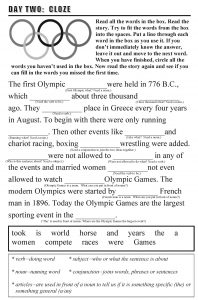
Emina McLean’s video ‘How to Teach Vocabulary and Why’ has some research based suggestions for teaching vocabulary that many teachers would find interesting.
However, I have a couple of additional suggestions based on the memory and learning research:
- At 23.20 minutes, Emina begins discussing how she would teach a word. She explains that she would tell students the word. I believe it would be more effective if you had students decode the word themselves.
- I believe with older students it would also be useful to discuss the etymology (i.e., ‘absquatulate’ comes from a combination of abscond, perambulate and squattle). Depending on the word you could also discuss the morphology of various components of the word (i.e., suffixes, prefixes, root words).
- At 25.25 where Emina is asking students the meaning, I would suggest that the slide with the meaning written is removed so that students are recalling the word rather than reading the word – this fits with the memory research which shows that recall is more powerful than just rereading multiple times. In fact, it is better to attempt to recall, be incorrect and receive corrective feedback than just to keep rereading.
- At 26.00, Emina talks about antonyms and synonyms for the word. I would suggest that students have the focus word written in the middle of a page and then in one corner they actually write the antonyms and in the opposite corner they actually write the synonyms – again this fits with the memory research whereby physically writing down the information assists with retention.
- At 27.16, Emina refers to an illustration related to the meaning. Again, it would be preferable that students drew their own illustration.
- At 28.27, Emina discusses students writing sentences themselves which is great. I would suggest combining this with the previous activity discussed just prior to this so that students write two sentences that correctly use the word and one sentence where the word is used incorrectly. They then swap with a partner to see if their partner can identify the sentence in which the word is incorrectly used. Younger students can use the teacher provided sentences as a structure.
For example: ‘I was at the park hoping my toddler would not absquatulate’ could become ‘I was at the park hoping my dog would not absquatulate’ or ‘I was at the shopping centre hoping my toddler would not absquatulate’. - To me there should be one more step in the process. The word should also be included in text that the student is reading for comprehension. Even better, would for be the word to be included in multiple different types of text. In other words, the selection of words could be related to texts students are required to read in any subject area.
- Related to the above point, the research shows that children also need to hear a word multiple times in different contexts. This would suggest that in the classroom context teachers should be using the focus words as often as possible during the day and encouraging their students to also use the word. It would also be useful to share the word with parents, so the word can be used in the home environment as well.
Link to Academic Word list.
- Two additional strategies for teaching contextual abstraction: Cloze activities, especially cloze activities in which the missing words have been explicitly chosen based on parts of speech (see example below); and having students determining the meaning of a nonsense word within a meaningful text (see example below).
- Analyse unknown words by their morphological structure as suggested, but then apply this to other words containing a similar morphological component. For example, if the unknown words was ‘psychologist’ help students break the word into the morphological units of ‘psych’=of the mind, ‘ology’= study of, ‘ist’=person who/specialist in. Then use this knowledge to assist in defining psychic, artist, biology, etc.
At about ten, Tom put down his axe. He lit a small fire in a safe place. He took a rad from the side of the wagon. He filled the rad with water from his water-bag. Then he set the rad on the fire. When steam came out of the rad, Tom made tea and poured some into a cup. There was no milk, but Tom added plenty of sugar.
For more ideas for teaching vocabulary, check out the Word Webs post and the Reading for Comprehension books.

